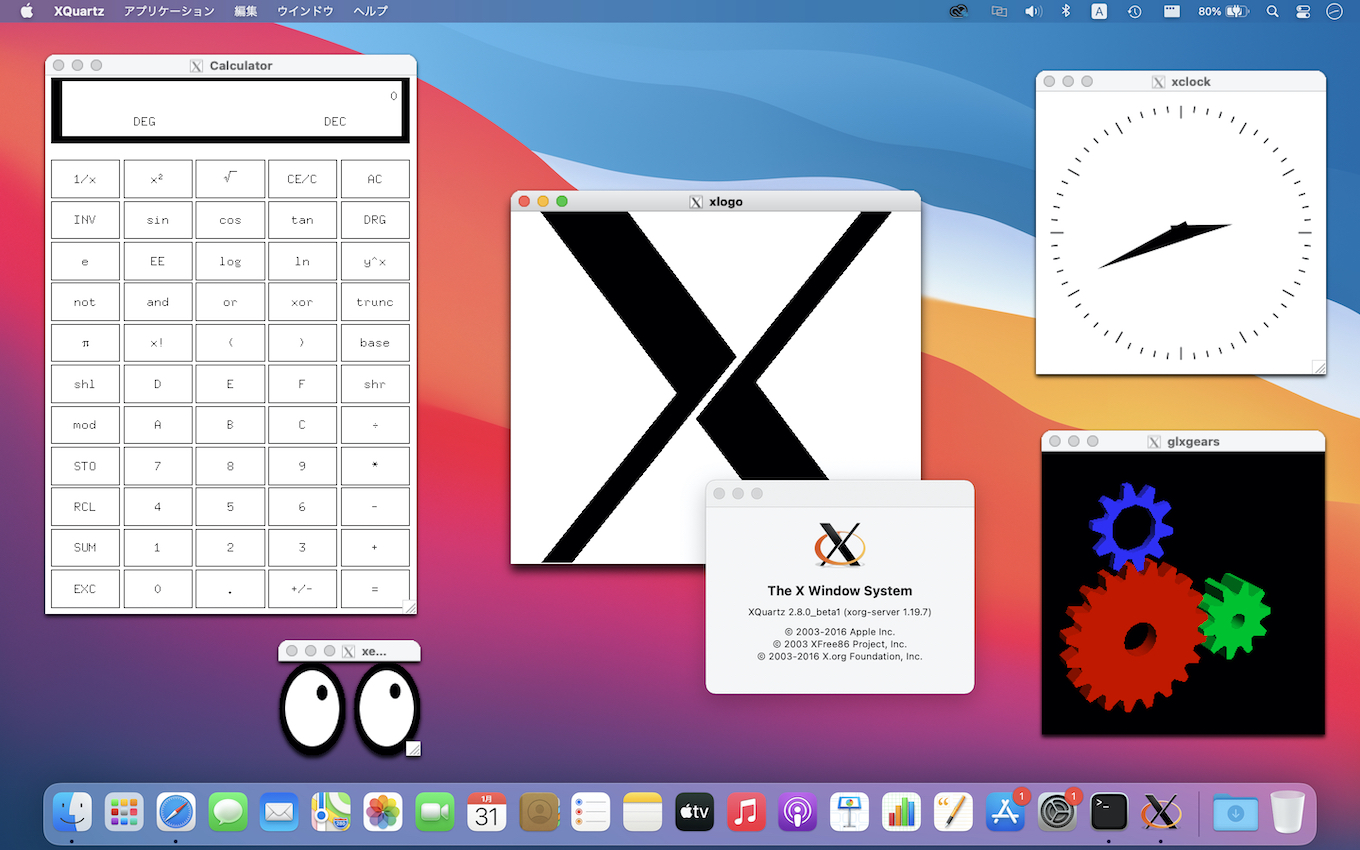

- #PROBLEMS WITH XQUARTZ WINDOW SIZE CODE#
- #PROBLEMS WITH XQUARTZ WINDOW SIZE WINDOWS#
You can see the tree using the xwininfo command, like this: $ xwininfo -tree -root The root of the tree is called the root window and fills the screen.
#PROBLEMS WITH XQUARTZ WINDOW SIZE WINDOWS#
The X server maintains a tree of windows (rectangles) and the applications manipulate it. Unlike Wayland, where applications are mostly unaware of each other, X is much more collaborative. So instead I'd been using ssh -Y vm from the host to forward X11 connections to the host's Xwayland, Sommelier already has support for this, but it doesn't work for the applications I want to use.įor example, popup menus appear in the center of the screen, text selections don't work, and it generally crashes after a few seconds (often with the error xdg_surface has never been configured).

In fact, I found that doing this avoided several bugs in Sway's built-in Xwayland support. I already had to write a Wayland proxy ( wayland-proxy-virtwl) to run in each VMĪnd relay Wayland messages over virtwl, so I decided to extend it to handle Xwayland too.Īs a bonus, the proxy can also be used even without VMs, avoiding the need for any X11 support in Wayland compositors at all. It wouldn't have any way to ask the compositor to put Xwayland's surfaces into a window frame, because Xwayland is a separate application. We can't have a third-party application act as the X11 window manager. It doesn't work when running applications in VMs,īecause each VM needs its own Xwayland service and existing compositors can only manage one.īecause Wayland (unlike X11) doesn't allow applications to mess with other applications' windows,.

#PROBLEMS WITH XQUARTZ WINDOW SIZE CODE#
The compositor is part of the trusted computing base (it sees all your keystrokes and window contents)Īnd this adds a whole load of legacy code that you'd need to audit to have confidence in it. It means that every Wayland compositor has to implement not only the new Wayland protocol, but also the old X11 protocol. Instead, the Wayland compositor is supposed to connect back to Xwayland over the X11 protocol and act as an X11 window manager to provide the missing features: telling the Wayland compositor what the window title should be), copy-and-paste, and selections. Xwayland handles X11 drawing operations, but it doesn't handle lots of other details, including window management (e.g. Ideally, Xwayland would completely isolate the Wayland compositor from needing to know anything about X11: However, setting this up wasn't as easy as I'd hoped. Xwayland can be used to allow unmodified X11 applications to run in a Wayland desktop environment. Many older applications haven't been updated yet. However, on newer systems the display is managed by a Wayland compositor, using the Wayland protocol. Until recently, this service was an X server, and applications would communicate with it using the X11 protocol. by showing each application in a separate window).Ĭlient applications connect to a server process (usually on the same machine) and ask it to display their windows. ( this post also appeared on Hacker News ) OverviewĪ graphical desktop typically allows running multiple applications on a single display In this post, I extend this to support X11 applications using Xwayland. A Wayland proxy running in each VM connects its applications to the host Wayland compositor over virtwl, allowing them to appear on the desktop alongside normal host applications. 
In my last post, Qubes-lite with KVM and Wayland, I described setting up a Qubes-inspired Linux system that runs applications in virtual machines.







 0 kommentar(er)
0 kommentar(er)
